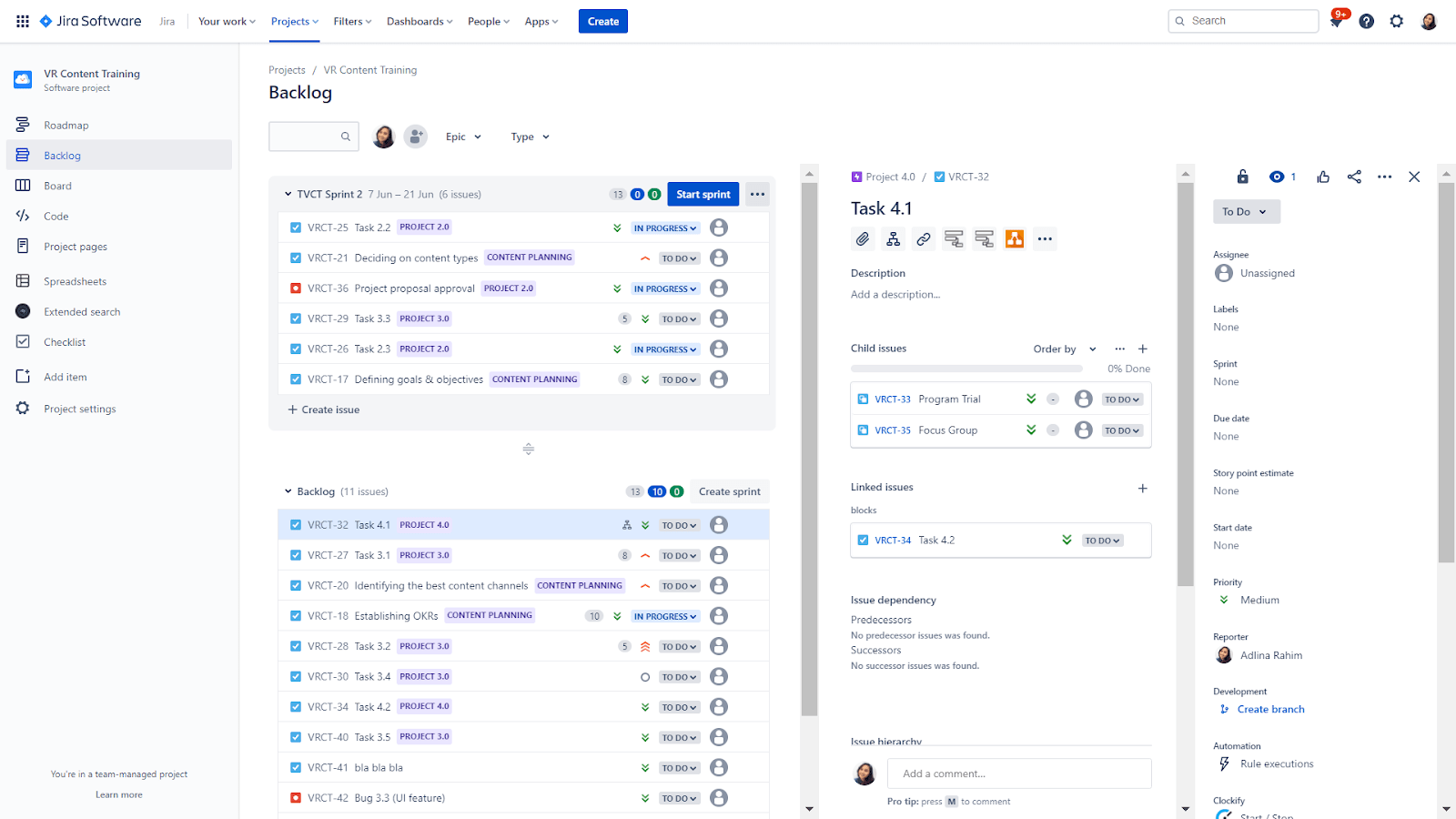In traditional project management, the initial planning stage has to be rock solid because changing requirements are seen as planning failure.
The scope of the project or product has to be fixed and managed thoroughly so that the project/product can be delivered according to plan.
What is Scope Creep in Agile?
Scope creep – basically any form of additional work, features, or requirements that were never included in the planning or explicitly agreed on – will typically cost the project an insufferable amount of time and money.
However, in agile projects, the scope is variable to allow for incremental development and feedback-driven improvement. This is because the key to agile is the ability to respond to changing business needs and deliver value – quickly and consistently.
So, since the basis of agile is embracing change, does that mean scope creep is non-existent?
No, scope creep can still happen in agile for numerous reasons. In the upcoming sections, we will further explore the causes of scope creep, the importance of scope management in agile, and how backlog refinement is a vital solution.
What is a Scope of a Project?
Let’s begin by defining scopes in agile.
A scope outlines the range of work, user stories, or features to be accomplished and the resources needed to deliver them successfully within a deadline. They are all gathered in the backlog.
Items with the highest level of priority, a solid work breakdown structure, and a clear context make up the scope for an iteration.
Changes can happen to any of the items; the requirements might evolve, the priorities might change, and the context could grow.
There could also be new items added, like new features that emerge from stakeholders’ requests or users’ feedback. But that’s the beauty of agile; each iteration allows teams to translate new learnings into new deliverables.
What Causes Scope Creep?
However, just because changes are welcomed, it doesn’t mean that all of them have a free pass into the backlog.
Uncontrolled flexibility can ultimately lead to scope creep and derail the project/product off the roadmap. Despite having a variable scope, you still need to be consistent with your roadmap.
Scope creep occurs when:
- Items in the backlog are not assigned accurate priority levels.
- Items in the backlog lack clarity and depth despite being high priorities.
- Teams are pushed into an iteration (or sprint) without clear goals.
- Changes are introduced or forced into the middle of an iteration.
- New features are rushed into development without proper requirements or cost analysis.
There has to be a clear change management process so that team members don’t feel burdened and project value doesn’t drop.
Since the scope is derived from the backlog, one of the most effective ways to handle scope creep in agile is through backlog refinement.
How to Manage Scope Creep Using Backlog Refinement
Backlog refinement or scrum refinement is a key process that is often neglected in agile.
It involves adding requirements, context, priority, and estimates or story points to backlog items before they are pushed for development in an iteration.
Done once every sprint, backlog refinement also involves removing irrelevant items that no longer add value to the product and aligning priorities with the roadmap to maintain a healthy scope.
In addition to enabling teams to streamline sprint planning and improving distribution and breakdown of work, backlog refinement is critical to managing – or avoiding – scope creep. It allows for a proper change management process to take place with controlled flexibility.
Here’s how effective backlog refinement practices can help manage scope creep in agile:
1: Clear Outline of Priorities for an Iteration
During refinement sessions, project managers or product owners need to arrange backlog items according to their priority level (highest to lowest).
Priorities are set based on business value, complexity, cost, and how ready an item is for development. When priority levels are accurate, teams can actively understand their upcoming workload, experience efficient sprint planning sessions, and gain a clear picture of the scope.
2: Adequate Information Support for High-Priority Tasks
Refining backlog items with clear descriptions, instructions, requirements, and estimates provides clarity and depth. When teams have enough context to work with, they can easily complete a high-priority item and deliver value in a timely manner.
Product owners or project managers need to make sure that they gather enough information on high-priority items before backlog refinement is carried out.
Using a project management platform like Jira makes it incredibly easy to refine backlog items and add context without having to switch between multiple screens.
3: Sprint Goals That Define the Scope for an Iteration
Teams suffer from scope creep when they don’t have a clear vision of an iteration in the first place. What value do they need to deliver?
By escalating high-priority items from the product backlog to the sprint backlog and outlining the goals for the sprint (expected deliverables), teams can gain a clear understanding of the scope and work systematically to accomplish said goals.
4: Backlog That Keeps New Requests in View
Where do agile teams get their upcoming tasks? From the backlog.
Therefore, new feature requests shouldn’t be forced upon them in the middle of a sprint without being discussed during backlog refinement and sprint planning sessions.
No matter how urgent, the request has to be added to the backlog first so as not to disrupt work dynamics and deter teams from accomplishing sprint goals.
5: Assessment of New Requests During Refinement
Before incorporating new changes, additional work or feature requests must go through cost and requirements analysis.
This is key to avoiding investing time, money, and energy into a feature that doesn’t add value to the product.
Once it is deemed to be a valuable addition to the product, it can be assigned a high-priority level, refined accordingly, and pushed for development in the upcoming sprint.
To discover more refining tips and backlog management best practices, check out The Ultimate Guide to Jira Backlog Refinement.
Effective Backlog Refinement Tool to Supercharge Agile Project Management
Remember, if you neglect scope creep management and don’t try to prevent it from happening earlier on, you may cause your project to fail.
If you’re managing your project on Jira, one of the best tools that can help you manage and refine your backlog effectively is the Excel-like Bulk Issue Editor for Jira. The app is designed to help you manage more than 10,000 backlog items on one screen and significantly improve the refinement experience by enabling bulk editing, and easy data export.
Learn more about backlog refinement best practices and the app by reading The Ultimate Guide to Jira Backlog Refinement.



